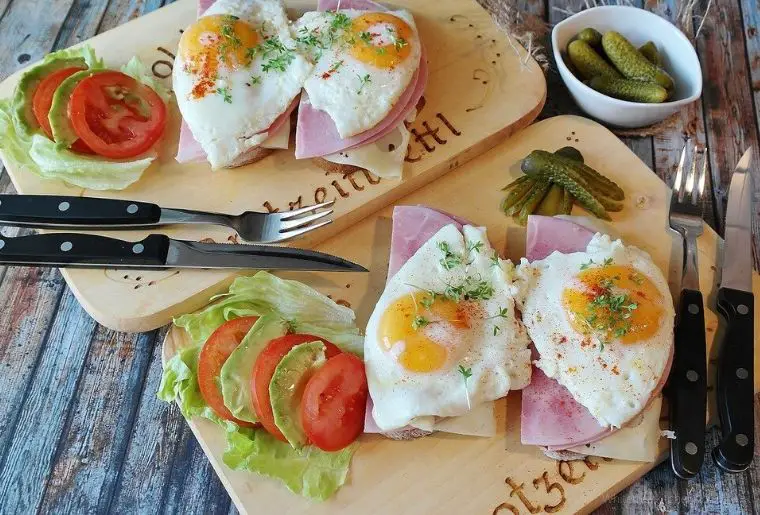
If you are having difficulty getting enough calories on your low carb way of eating and want to easily increase your calories a great way to do that is to know which foods are both low carbs and higher calories.
Low carb eating is great. Carbs are the main source of calories for most in their usual way of eating. When you ditch the carbs most of your calories go with it.
Below is a list of low and lower carb foods that are higher in calories and often fat as well. These include avocados, butter, flour and many more.
One of the difficulties with low carb eating that I have found is that it is often difficult to get enough calories and fat when starting out. Most low carb eaters say not to count calories as you don’t need to. However, I have found that removing the carbs often means not getting enough calories or fat.
This is because when you remove the carbs it is often hard at first to adapt to eating fat. It is counter-intuitive due to years of being told it is wrong, or at least it was for me and others I have spoken to or listened to online. If this is your challenge this post will help give you some options to increase fat and calories.
For low carb eaters foods low in carbs and high in calories are often those that contain fat or protein. The vegetables mostly are low.
Important Note: Below are, the vital LCHF (Low Carb High Fat) nutritional facts for each food is included these are Calories, Carbs, Fat & Protein. Other nutrition like vitamins etc is mentioned but may be omitted.
Avocados
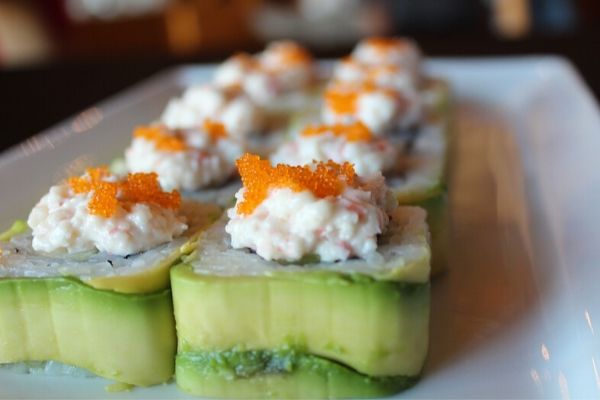
A popular choice for high-calorie food is Avocados.
Avocados are popular as they are versatile in cooking higher in fat and have lots of vitamins.
You can use avocados in desserts, salads, smoothies or other recipes. They can be bought fresh or frozen.
If you are not an avocado fan you can hide the taste when you use them in recipes.
Nutrition: Avocado Calorie & Carb Info
Per 100g (Depending on the side one avocado is approx 170G).
- Fat 15g which include saturated, Polyunsaturated fat and Monounsaturated fat
- Calories 160
- Protein 2g
- Carbohydrate 9 g (0.7g of sugars)
- It’s also packed with vitamins and minerals
Dark Chocolate
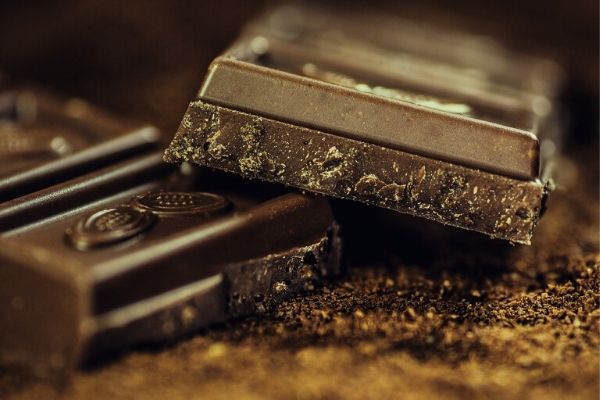
Dark chocolate is a welcome treat for many on low carb diets or ways of eating (WOE).
Ideally, you need to keep the amounts you eat down to only a couple of squares per day.
The chocolate needs to be unsweetened and 70% cocoa or more. If you are new to dark chocolate start with 70% and work up if you can. Dark chocolate can be used as a treat or in deserts. For the low carb woe (way of eating) keep this to a minimum.
Dark Chocolate Nutritional Info
Dark chocolate is a tasty treat. Chocolate is higher in carbs than many foods in this article. It is recommended that you only have a couple of cubes in a day.
Important Note: The nutrition will vary from brand to brand and which percentage of cocoa you choose so it pays to check when you buy. However, as a general guide dark chocolate has the following:
Per 100g of 90% dark chocolate
- Energy 643kcal
- Fat 56g incl saturates 34g
- Carbohydrate 22g incl sugars 12g
- Protein 9.5g
Nuts
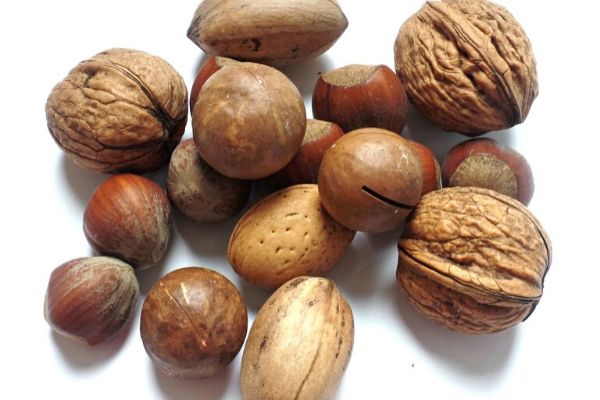
You can eat nuts in moderation. They are higher in carbs than many foods mentioned. If you are trying to lose weight you may want to either forgo nuts or make sure you are strict with them. There are many complaints that when nuts are eaten the weight does not come off. That is because it is easy to eat too many of them.
Important Note: Nut nutrition values can vary.
Almonds
Almonds are great. You can eat them whole, roasted with sea salt, use them in recipes like curry or even ground up in cooking.
Almonds are a lower-carb alternative flour to wheat flour in cooking. They are a more expensive option people often use ground Almonds rather than almond flour in cooking to save money.
Nutrition Per 100g (1 cup) of Whole Almonds
- Calories 658kcal
- Fat 50-55.8g includes saturated, polyunsaturated and monounsaturated fats
- Carbs 6.9g
- Protein 21-29.0g
If you want to use almonds that are slivered, ground, etc the cup amounts vary see here for a converter to cups for all types of almonds source
Nut Butters
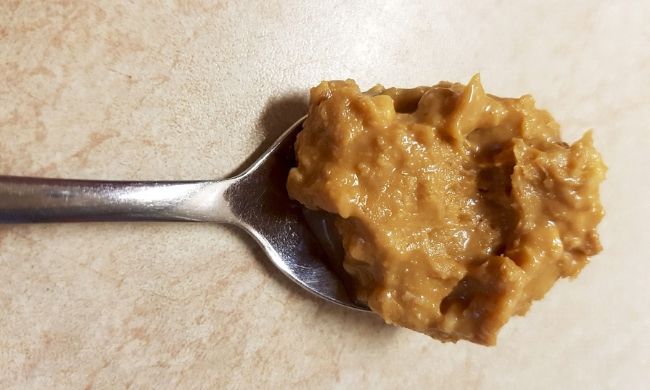
Nut butter is simply ground down nuts. You can grind one specific nut or a mixture of nuts. There is nothing else included.
The Best nuts that you can use include:
- Almond
- Hazelnut
- Walnut
- Cashew
- Pecan
- Pine
- Pistachio
- Brazil
- Peanut
- Walnut
While nuts and nut butter can be eaten on a low carb way of eating as they are higher carbs they need to be eaten in moderation.
Nut Butter Nutrition
Nut butter nutritional values will change slightly depending on the nuts you use to make it.
As a general guide per 100g. (One portion is 32g or 2 tablespoons)
- Calories 588
- Total Fat 50 g (Saturated fat 10 g Polyunsaturated fat 14 g Monounsaturated fat 24 g)
- Total Carbohydrate 20 g
- Protein 25 g 50
Dairy
Cheese

Cheese is great because there are lots of different flavors and types to choose from. Cheese is high in fat and low in carbs. There are also lots of ways to use it.
One of the disadvantages of cheese is it is high in saturated fat. This is still considered bad by many. So it is best eaten in moderation.
- Mozzarella,
- Cheddar ,
- Parmesan,
- Halloumi,
- Camembert, etc.
Use on salads, like a cauliflower cheese as a topping for a lasagna (note you need to change the lasagna sheets if you are going to the lower end of low carb eating), etc.
Cheese Nutrition
Important note: The nutrition in cheese changes from cheese to cheese so this is only a rough guide. Always check the label while most cheeses are ok I have seen some with 28g of carbs per 100g.
Cheddar Cheese
(Popular and made in many countries incl UK, USA, Sweden, New Zealand, Australia and many more)
Per 100g of Cheddar cheese Energy 417kcal
- Fat 35g saturates 22g
- Protein 25g
- Carbohydrate <0.5g, sugars <0.5g
- Plus salt, minerals & calcium
Source Asda.com
Eggs
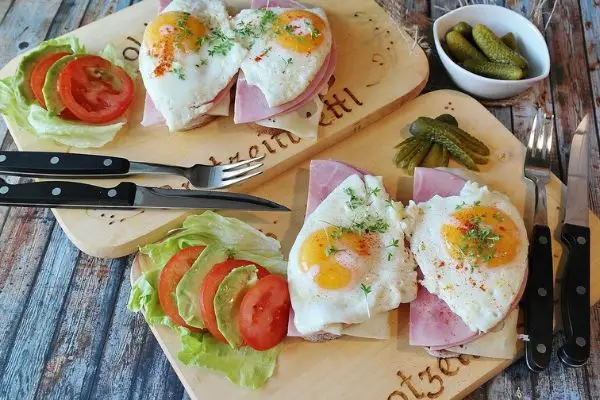
Eggs are hugely popular on low carb eating. They are super versatile.
The downside is that often people rely too heavily on eggs in the absence of other foods and get bored with them.
Nutrition For Eggs
Egg nutrition varies from the size of the egg to the Brand. I looked at several brands in my local supermarket and they all varied slightly.
As a guide per 100g (approx 2 large chicken eggs)
- Calories kcal131/KJ 547
- Carbs (0 USA) (UK <0.5g)
- Protein 12.6g
- Fat 9g
Cream, High in Fat Calories and Very Tasty
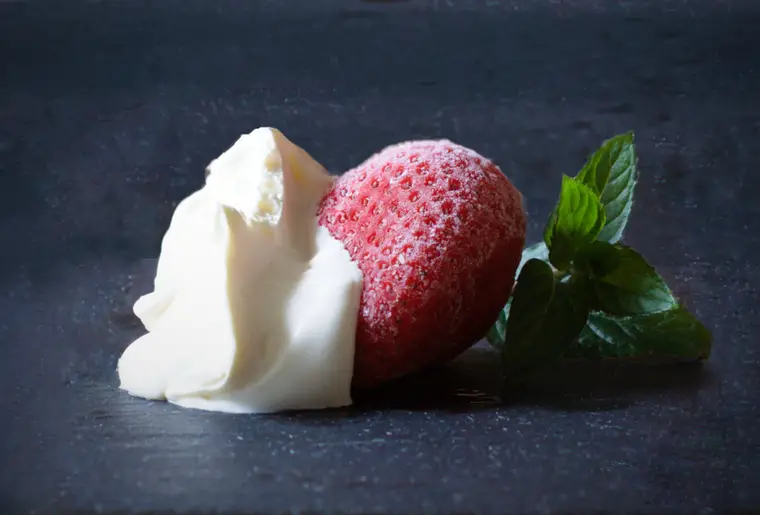
Creams are a popular choice. An indulgence that most other eating diets to lose weight does not allow. It is versatile, tasty and easy to buy or make.
With different types of creams like single, pouring, double, heavy or clotted cream to choose from there are lots of options for use.
Popular uses for cream include:
- Put it in your coffee.
- Eat with a dessert. Berries for instance. (depending on your level of low cal and if you are diabetic etc) I love to do this with frozen berries as the cream freezes and it is like eating ice cream.
- Use it in cooking.
Use Butter to Increase Your Fat & Calorie Content When Eating Low Carb

Butter is very high in both fat and calories so it is ideal for increasing your calorie and fat intake. As it is high in saturates it is not everyone’s choice to use or perhaps if this is a concern use in smaller amounts.
- One Popular method of upping the calories is bulletproof coffee. This is simply about putting a portion of butter in your coffee. I confess my reaction to this is yuk! Yuk! And Super YUK! While we were brought up to try things before having a view on them just the thought of this makes me want to urge. I will probably try it eventually. But in my view, there are better uses of butter.
- I like to put some on my vegetables, peas (not the best low carb vegetable), etc.
- You can cook with it or put it in some recipes.
- For baking.
- Use on your fish.
- Use on low carb toast.
Butter Nutritional Content
There are slight variations in brand or country but generally, the nutritional content of butter per 100g is:
- Fat 82g,
- Carbs 0.6g,
- Protein 0.6g
- Calories in Butter 3062kJ/745kcal per 100g(source the one I use)
For the US or Cup users, 1/4 pound (110g) each, which also equals 1/2 cup. This is 789 calories)
Butter has a bit of a bad rep with some groups due to its high saturated fat content and animal care. I buy mine mostly from locally sourced farmers with a good reputation.
Oils For Salads, Cooking & More
Olive Oil

Olive oil is a popular healthy fat that is eaten on other diets like the Mediterranian diet and keto diet. It is extremely high in good fat and low in saturated fat.
Olive oil is great to drizzle over salads, ideal for meats and vegetables. While it is not generally advised for cooking due to not being suitable in high temperatures it can be used to saute. It is best to use extra virgin olive oil for non-cooking use and olive oil or olive oil blend for cooking.
One of the things I use it for is to make up different types of salad dressings. You can find salad dressings here.
Olive Oil Nutrition
Energy per 100ml is 822kcal (0.42 cup US of extra virgin olive oil)
- Fat 91.3 g of which saturates 15.5 g, Mono-unsaturated 65.1 g, Polyunsaturated 10.7 g
- Carbohydrates 0 g
Note: There are slight variations in taste and nutrition values.
Avocado Oil
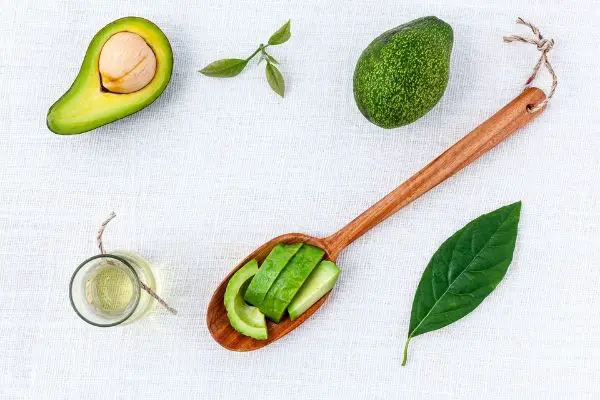
Avocado oil is a very healthy fat that is high in monounsaturates. It reduces cholesterol and is high in antioxidants.
There are lots of ways you can add avocado oil to your food to increase your fat and calories.
Try drizzling it on your salads or cooked vegetables. Use it as a marinade. Add it to a smoothie to balance your nutrition. You can even bake with it.
You can use it for cooking up to medium-high heat. Its taste isn’t as strong as olive oil so it might be a good alternative.
Avocado Oil Nutrition
Calories 884
- Total Fat 100 g Monounsaturated fat 71 g, Polyunsaturated fat 13 g, Saturated fat 12 g
- Total Carbohydrate 0 g
- Dietary fiber 0 g
- Protein 0 g
Coconut Oil

Coconut oil is popular among some eating methods and health practitioners and controversial with others due to its high saturated fat content.
At 862 calories per 100g, it is great for adding both fat and calories to a meal. It is great for cooking. Used in curries it adds a lovely coconut taste.
Coconut Oil Nutrition
Calories 862 er 100 g (7.37oz just over 1 cup)
- Total Fat 100 g Saturated fat 87 g, Monounsaturated fat 6 g, Polyunsaturated fat 1.8 g
- Total Carbohydrate 0 g
- Protein 0 g
Almond Flour
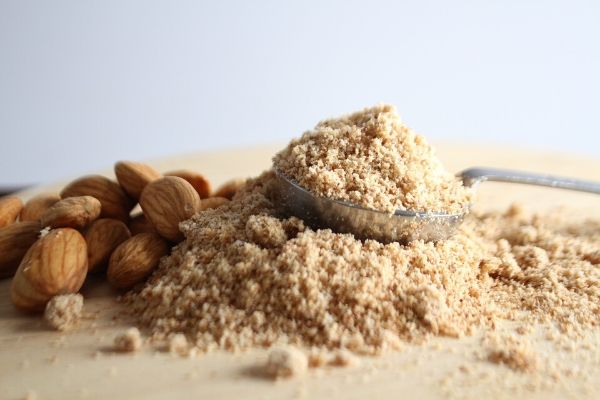
Almond flour is often used for low carb baking because it is lower carb than normal flour. There are other methods as well that can be used for some things that remove flour for even lower carb options.
Nutrition for Almond Flour
Per 100g: 612kcal (1.04 US cups by volume source )
- Fat 56g
- Carbohydrate 6.9g (sugars 4.2g)
- Protein 21g
Seeds
Hemp Seeds
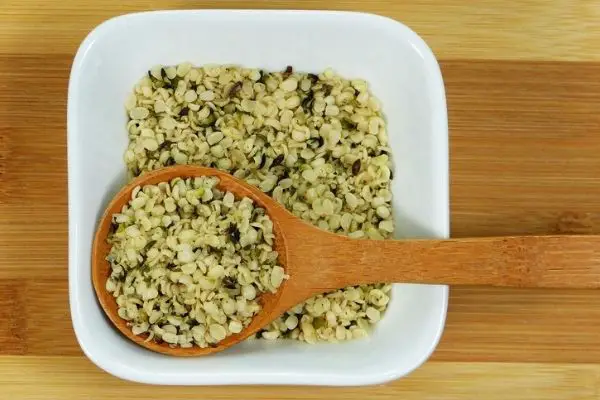
Hemp Seeds
You can eat hemp seeds either shelled or unshelled. They are easy enough to incorporate into your daily foods for added calories and fat. They are higher in carbs per 100g then many foods shown here but still low in smaller amounts.
I wanted to include variety because to make up a good day’s nutrition you need to have a variety of options and combinations. Especially with low carb being so variable.
You can use hemp seeds on your cereal (not everyone will still eat cereal on low carb) or put them in your smoothies and yogurts. You can also sprinkle them on salads or use them to coat meat or in sauces.
Some people recommend that you soak them for several hours before use or until they sink in water if you are using whole seeds.
Hemp Seeds Nutrition
Per 100g (0.62 US Cup)
Energy 567cal
- Fat 47g incl Saturates 5.2g
- Carbohydrates 11g
- Protein 31g
Sesame Seeds
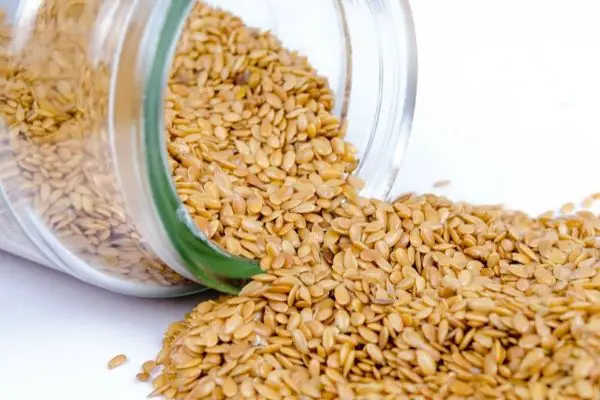
Sesame seeds are a great way to add calories and fat to your meal. They can be used in many ways including added to salads, rice or chicken. They can be ground up to make sauces or added to curries.
Sesame Seeds Nutrition
Per 100g (0.5 Metric cup plus 2.5 tablespoons)
- Energy 613cal
- Fat 58g incl saturates 8.3g
- Carbohydrate 0.9g
- Protein 18g
Meat
With the low carb diet, you don’t have to use the leaner cuts of meat. If you use the cuts with more fat in them the calorie content is higher. Eat red meat in moderation and combine it with other forms of fat.
Beef
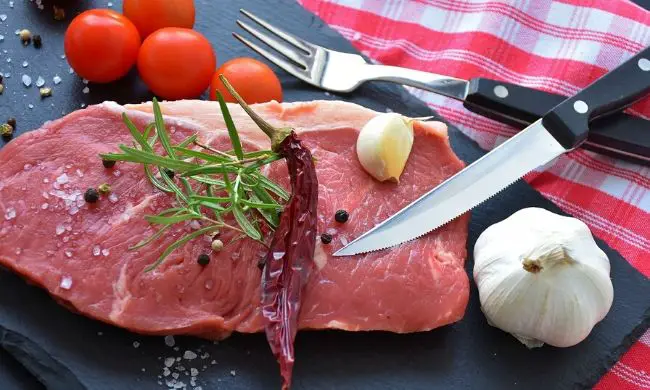
Beef
The different cuts of beef have different amounts of calories and fat. I have found that on average beef is between 200- 250 and up 290 calories per 100g in the local supermarkets (stores). Yet information online indicates that it can be much higher than this. It is best to check your nutritional labels for each type of beef.
Nutritional Value of Beef Rump Steak
(average) Per 100g
- Energy 225cal
- Fat 16g (saturates 6.0g)
- Carbohydrate <0.5g (counted as zero carbs on LCHF eating)
- Protein 21g
Sheep Mutton, Hogget & Lamb
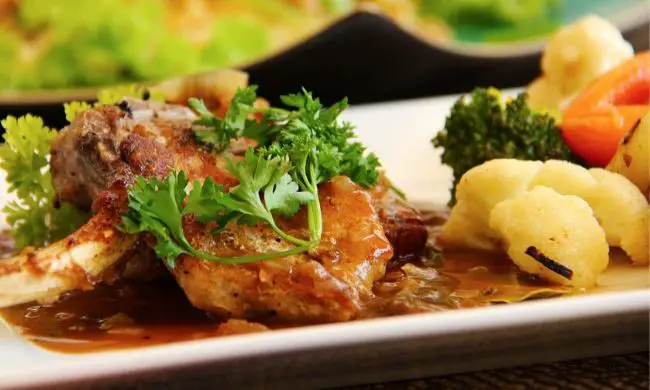
Sheep comes in different cuts and makes many tasty dishes including some of these:
- Lamb chops with various flavors/styles eg minted,
- Korean mutton or Lamb,
- Persian,
- Greek,
- Roasted Lamb,
- Morrocan cassoulet,
- Lamb kleftiko
- Baked lamb
- Slow-cooked lamb casserole
- Mutton Curry
- Lamb Bulgogi
*Recipes may need to be adapted to low carb.
Nutrition of Sheep
Calories 294 per 100g
- Total Fat 21 g, Saturated fat 9 g, Polyunsaturated fat 1.5 g, Monounsaturated fat 9 g
- Cholesterol 97 mg
- Total Carbohydrate 0 g
- Protein 25 g
Pork
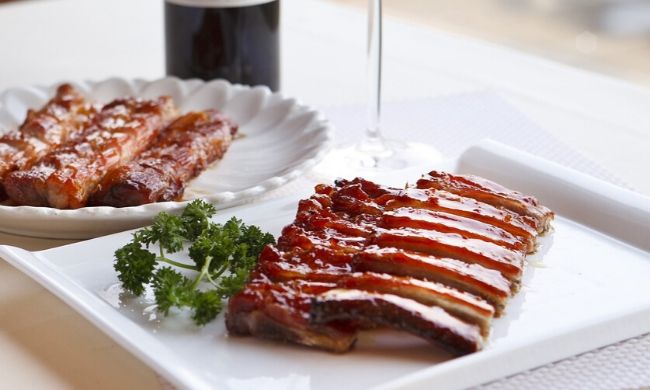
Whether it be pork steaks, ribs, chops or belly, etc or roasted, stewed or grilled, pork is a great red meat to add to your diet for additional calories and fat.
Nutrition values are for Pork Steaks
- Energy 276 kcal
- Fat 22g of which saturates 7.4g
- Carbohydrate <0.5g of which sugars <0.5g Counted as zero carbs)
- Protein 26g
Bacon
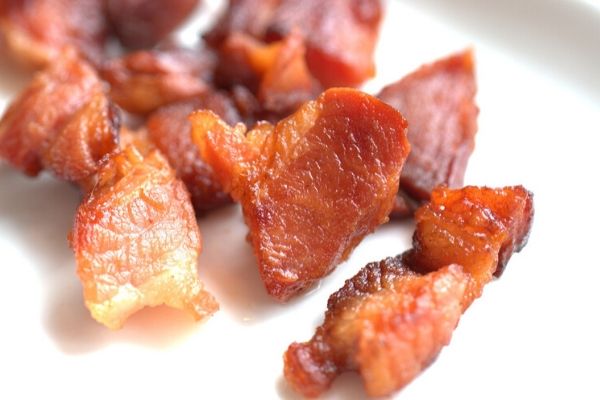
While bacon is processed and not the best choice as it is best to eat unprocessed foods, it is very popular among those that eat low carb and meat.
With low carb, you do not have to have the low-fat choices.
Bacon Nutrition
Per 100g (3.5oz)
- Energy 261cal
- Fat 16g (saturates 6.8g)
- Carbohydrate <0.5g (sugars<0.5g) Bacon is counted as zero carbs.
- Protein 29g
Oily Fish
Fish is generally lower in calories than most of the other food mentioned. However, fish, especially oily fish, is a good food to have in your LCHF diet. It is also a lot higher in calories than other fist or vegetables so it is a good way to raise your calorie intake.
I have included oily fish because it is perfect for a low carb way of eating, it has a variety of fats, often zero carbs, protein and vitamins, and minerals. Also, you can increase your fat content of fish by the way you cook it.
Salmon

If you want to increase your calories and fat content, make a buttered salmon. I confess I bake mine in my halogen, but you can use a normal oven or hob (stove) top.
There are lots of variations of this recipe. E.g. you can use garlic butter or lemon with butter etc.
Nutrition for Salmon
Per 100g (slightly under 4oz which is 113-115g)
- 225 calories
- Fat 15g
- Protein 23g
- Carbs 0g
Other Kinds of Oily Fish
- herring.
- mackerel.
- sardines.
- sprats.
- pilchards.
- trout.
Mayonnaise
You can use mayonnaise. It’s best to make your own unless you can find a genuine low or no sugar mayo as store-bought mayo can have a lot of sugar. Check your labels.
Mayo is another great way to include taste and variety to your meals. It is perfect with salads and makes an ideal dip. For those of you that use low carb bread, it is great of sandwiches like egg or tuna mayo.
- Energy 721 kcal
- Fat 79 g ( incl. saturates 6.2 g)
- Carbohydrate 1.3 g, (all sugar)
- Protein (g) 1.1 g
Conclusion
These food choices are based on the low carb high-fat way of eating (WOE) which is becoming more popular. The aim was to include enough variety in this article to give you lots of options. Because many of these foods are multi-use they can be easily incorporated into your diet.